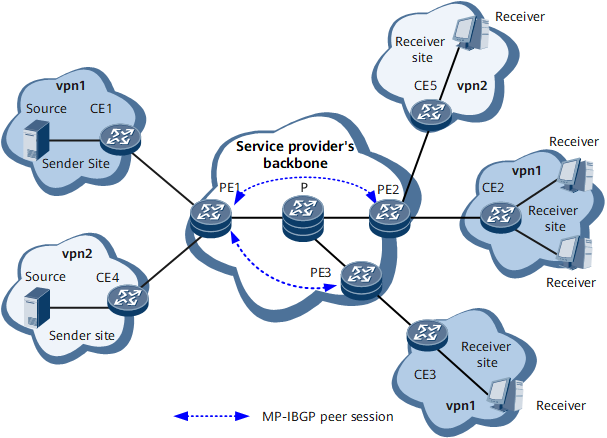MVPN Membership Autodiscovery
To exchange control messages and establish PMSI tunnels, a PE on an MVPN must be capable of discovering other PEs on the MVPN. The discovery process is called MVPN membership autodiscovery. An NG MVPN uses BGP to implement this process. To support MVPN membership autodiscovery, BGP defines a new address family, the BGP-MVPN address family.
On the network shown in Figure 1, BGP and MVPN are configured on PE1, PE2, and PE3 in a way that PE1 can negotiate with PE2 and PE3 to establish BGP MVPN peer relationships. A PE newly added to the service provider's backbone network can join the MVPN so long as this PE can establish BGP MVPN peer relationships with existing PEs on the MVPN.
To transmit multicast traffic from multicast sources to multicast receivers, sender PEs must establish BGP MVPN peer relationships with receiver PEs. On the network shown in Figure 1, PE1 serves as a sender PE, and PE2 and PE3 serve as receiver PEs. Therefore, PE1 establishes BGP MVPN peer relationships with PE2 and PE3.
PEs on an NG MVPN use BGP Update messages to exchange MVPN information. MVPN information is carried in the network layer reachability information (NLRI) field of a BGP Update message. The NLRI containing MVPN information is also called the MVPN NLRI. For more information about the MVPN NLRI, see MVPN NLRI.
